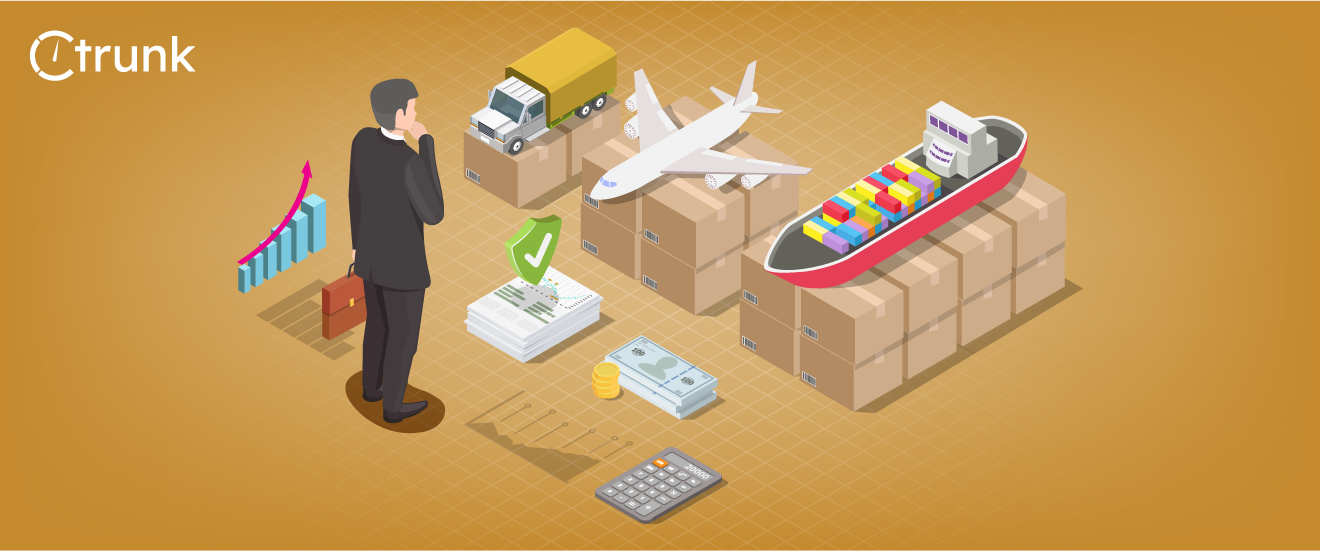Logistics Accounting: Best Practices To Follow

Logistics management is among the most critical functions of a commercial entity since it involves the deliberate organization, implementation, and coordination of the transfer of goods and services from their origin to their final destination. A major challenge in logistics administration is effectively managing costs while still upholding the quality of service rendered.
This all-inclusive article delves into various strategies and methodologies that enterprises can utilize to proficiently manage logistics expenditures.
Effective management of logistics costs can exert a significant impact on a business’s financial outcomes, thereby rendering it crucial to handle them with utmost care. Proficient management of logistics costs can enable businesses to remain competitive, boost customer satisfaction levels, and bolster their profitability margins.
By competently regulating logistics costs, businesses can streamline their operations and reduce redundancy, leading to optimal resource allocation and augmented bottom-line efficiency. Businesses need to be mindful of all the expenses, as they can significantly impact the company’s finances. By being aware of the costs and properly managing them, businesses can increase their profits and stay competitive in the market.
Logistical expenses can come in various forms, and enterprises must acknowledge and consider them. These expenditures can be categorized into the following types:
These encompass the expenses incurred while transferring goods from one place to another. Fuel, labor, and maintenance expenses all fall under this category.
This type covers the expenses that come with keeping inventory. Storage costs, insurance fees, and taxes all make up the expenses that are related to inventory.
These are the costs of renting or owning a warehouse. This includes utilities, labor, and maintenance expenses.
This category includes the costs of order processing, including labor, technology, and order picking costs.
This category refers to the costs of managing logistics operations, which can include salaries, benefits, and overhead costs.
Various factors give rise to the expenses related to logistics. Among these factors are:
The span between the origin and destination points significantly influences the costs linked to transportation.
The mass and size of the goods being moved have a direct impact on transportation expenses since larger and heavier products necessitate more fuel and space.
The accelerated transfer of goods can increase transportation costs considerably, whereas longer delivery times may reduce costs.
The provision of a high standard of service, like same-day delivery, can contribute significantly to the logistical expenses.
Logistics cost management can be effectively achieved through various tactics and procedures.
It is the process of identifying the most cost-efficient mode of transport while keeping the service levels consistent. The implementation of this technique includes optimizing routes, adopting intermodal transportation, and consolidating shipments.
Inventory management is another critical aspect that can significantly impact the logistics cost. Effectively managing inventory can help decrease storage expenses and enhance cash flow. This can be accomplished through just-in-time (JIT) inventory management, deploying inventory tracking systems, and minimizing safety stock levels.
Outsourcing logistics functions presents an opportunity for businesses to reduce costs through the capitalization of third-party logistics providers’ awareness. These logistics functions may include transportation, warehousing, as well as order fulfilment.
Technological solutions, including transportation management systems (TMS), warehouse management systems (WMS), and enterprise resource planning (ERP) systems, can furnish businesses with the capacity to optimize logistics operations and trim expenses. So, technological advancements have empowered the logistics industry in the past few years.
Logistics cost management involves the use of Key Performance Indicators (KPIs) to measure business performance and track progress towards goals. In this regard, KPIs serve as vital tools that enable organizations to monitor costs and identify areas for improvement. Several KPIs are available to companies for logistics cost management purposes.
Cost per Unit is a KPI that helps organizations determine the total logistics cost divided by the number of units shipped. By utilizing this KPI, businesses can establish the cost of logistics per unit of product. This, in turn, facilitates critical pricing decisions and evaluations of product profitability.
Order cycle time, on the other hand, involves the duration between order receipt and product delivery to the customer. This KPI enables businesses to identify operational bottlenecks in the order fulfilment process, thus enhancing lead times and customer satisfaction levels.
Inventory turnover refers to the frequency at which inventory is sold and afterwards refilled within a given timeframe. This performance indicator provides insight into the efficiency with which a business manages its inventory, thereby enabling the identification of opportunities for minimizing inventory holding expenses.
Perfect order rate represents the proportion of orders that are delivered punctually, with completeness, and without any harm. This performance indicator enables businesses to evaluate the quality of their logistics activities, as well as identify areas for improvement.
Effective management of logistics expenses is a fundamental requirement for commercial entities seeking to maintain their competitive edge, increase customer satisfaction, and enhance profitability.
By understanding the various categories of logistics-related costs as well as the underlying factors that dictate such expenses, companies can efficiently apply cost management techniques that include the optimization of transportation mechanisms, improved inventory management strategies, outsourcing of relevant logistical functions, and leveraging state-of-the-art technological solutions.
Lastly, the adoption of Key Performance Indicators (KPIs) can aid companies in effectively monitoring expenses and gauging progress with regard to established benchmarks.